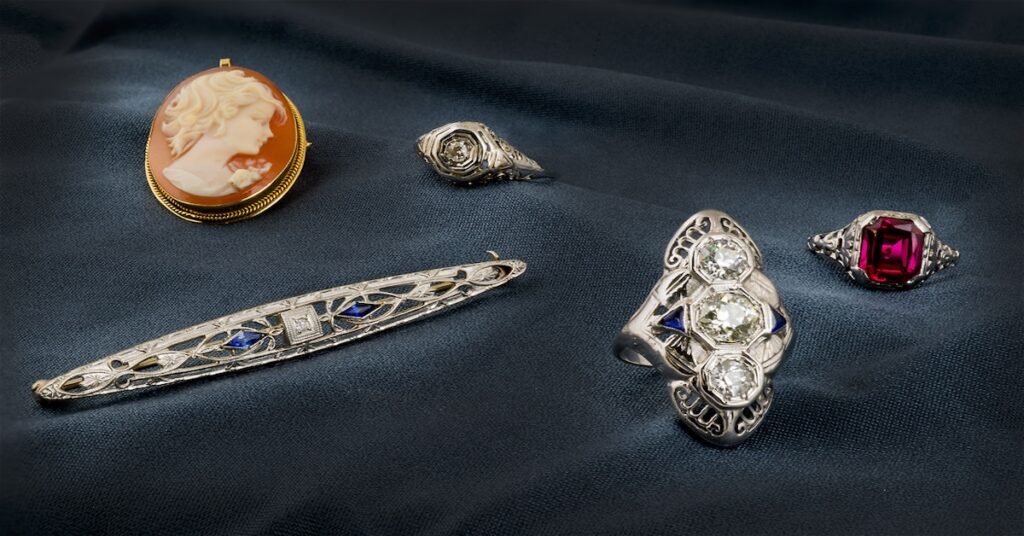Inherited silver is a treasure for many people, not only because of its beauty but also because of the emotional attachment it holds. Whether it’s a family heirloom passed down through generations or a gift from a beloved relative, these items can carry deep sentimental value. But if you’re wondering whether your inherited sterling silver has financial worth as well, you might need to dig a little deeper. Knowing how to assess the value of sterling silver can help you decide whether to keep it, sell it, or pass it on. In this article, we’ll explore how you can tell if your inherited sterling silver is valuable, looking at factors like authenticity, condition, market value, and sentimental worth.

What Is Sterling Silver?
Sterling silver is an alloy composed of 92.5% pure silver, with the remaining 7.5% made up of other metals, typically copper. This specific mixture makes sterling silver durable, malleable, and shiny, which is why it has been used for everything from jewelry to fine tableware for centuries. Its intrinsic value stems from the silver content and the metal’s historical importance. While sterling silver is precious, its value is also affected by factors such as craftsmanship, condition, and market demand.
Identifying the Authenticity of Your Inherited Sterling Silver
One of the first things to check when evaluating the value of sterling silver is its authenticity. Genuine sterling silver will have certain marks or hallmarks that indicate its quality and authenticity.
Silver Marks and Hallmarks
Most pieces of sterling silver are stamped with a mark that indicates the silver content. The most common stamp is “925,” which means the piece contains 92.5% silver. There may also be additional marks such as a maker’s mark, country of origin, or the manufacturer’s logo, all of which can help identify the piece’s origin and age.
Hallmarks: What Do They Mean?
Hallmarks can significantly influence the value of your sterling silver item. In some countries, like the UK, the hallmarks are highly regulated and help trace the silver’s origin, age, and the silversmith responsible for the piece. Items with well-known or rare maker’s marks may fetch a higher price due to their historical value and craftsmanship.
For example, a sterling silver piece from a renowned silversmith like Tiffany & Co. or Georg Jensen can be much more valuable than a generic piece, even if they both have the same silver content. Similarly, older pieces with unique marks can be worth more due to their rarity.
Assessing the Condition of Your Sterling Silver
The condition of the silver is another crucial factor in determining its value. Even though sterling silver is a durable metal, it can still tarnish, scratch, or get damaged over time.
Common Condition Issues
Tarnish is a common issue with sterling silver, especially if the piece has been stored improperly or not cleaned regularly. While tarnish can be removed, it may affect the aesthetic appeal and value of the item. Dents, scratches, and signs of wear and tear will also lower the item’s value, especially if they are noticeable or affect the overall integrity of the piece.
Preserving Sterling Silver
To keep the silver in good condition, it’s essential to maintain it properly. Store your silver pieces in a dry, cool place, and use cloth bags or pouches that prevent air exposure to minimize tarnishing. For cleaning, use silver-specific polish or a soft cloth, but avoid harsh chemicals that could scratch or damage the surface.
If the item is significantly damaged or tarnished, consider having it professionally restored to maintain or improve its value.
Determining the Market Value of Sterling Silver
Once you’ve established that the item is authentic and in decent condition, the next step is to determine its market value. There are several factors that play into this, including the current price of silver, the craftsmanship of the piece, and its rarity.
Current Market Value of Silver
The price of silver fluctuates based on the global market. As silver prices rise and fall, so too does the value of sterling silver items. To get an idea of the current market value, check the daily price of silver per ounce and calculate the weight of your silver item to estimate its worth. However, remember that the value of sterling silver also depends on other factors beyond just the silver content.
Craftsmanship and Design
The craftsmanship and design of the silver item are major contributors to its value. For example, hand-crafted or intricately designed pieces tend to hold higher value than mass-produced ones. Items with exceptional artistry or historical significance (like silver from a renowned silversmith or rare vintage designs) are generally more valuable.
Researching Prices
To get a better idea of how much your inherited sterling silver is worth, research similar items online or visit local antique dealers. Websites like eBay, Sotheby’s, and Christie’s offer auctions and sales of antique silver, giving you a range of prices based on similar pieces. Local jewelry appraisers or antique experts can also provide valuable insight.
Sentimental Value vs. Monetary Value
While the monetary value of sterling silver is important, it’s equally important to consider the sentimental value that inherited pieces carry. Family heirlooms are often irreplaceable and can hold far more meaning than any price tag.
Weighing Emotional and Financial Worth
If you’re torn between selling your inherited sterling silver or keeping it, consider how much sentimental value it holds. Is it something you’d like to pass down to future generations? Does it have a special memory attached to it that goes beyond its market price? Sometimes the emotional connection to the piece outweighs its financial value.
However, if you decide that selling it is the best option, knowing its worth ensures you don’t undervalue it or sell it for less than its market potential.
Conclusion
Determining the value of inherited sterling silver requires a combination of research and careful evaluation. Start by checking the authenticity through silver marks and hallmarks, then assess its condition, and finally research the current market value based on its weight, craftsmanship, and rarity. Don’t forget to consider the sentimental value as well, as that may affect your decision to keep or sell the piece.
If you need expert assistance in evaluating your inherited silver, DMK Metal is here to help. We specialize in appraising precious metals, and our team can provide you with an accurate valuation for your silver heirlooms. Whether you’re looking to sell or simply want to know the worth of your items, reach out to us today to get started.
